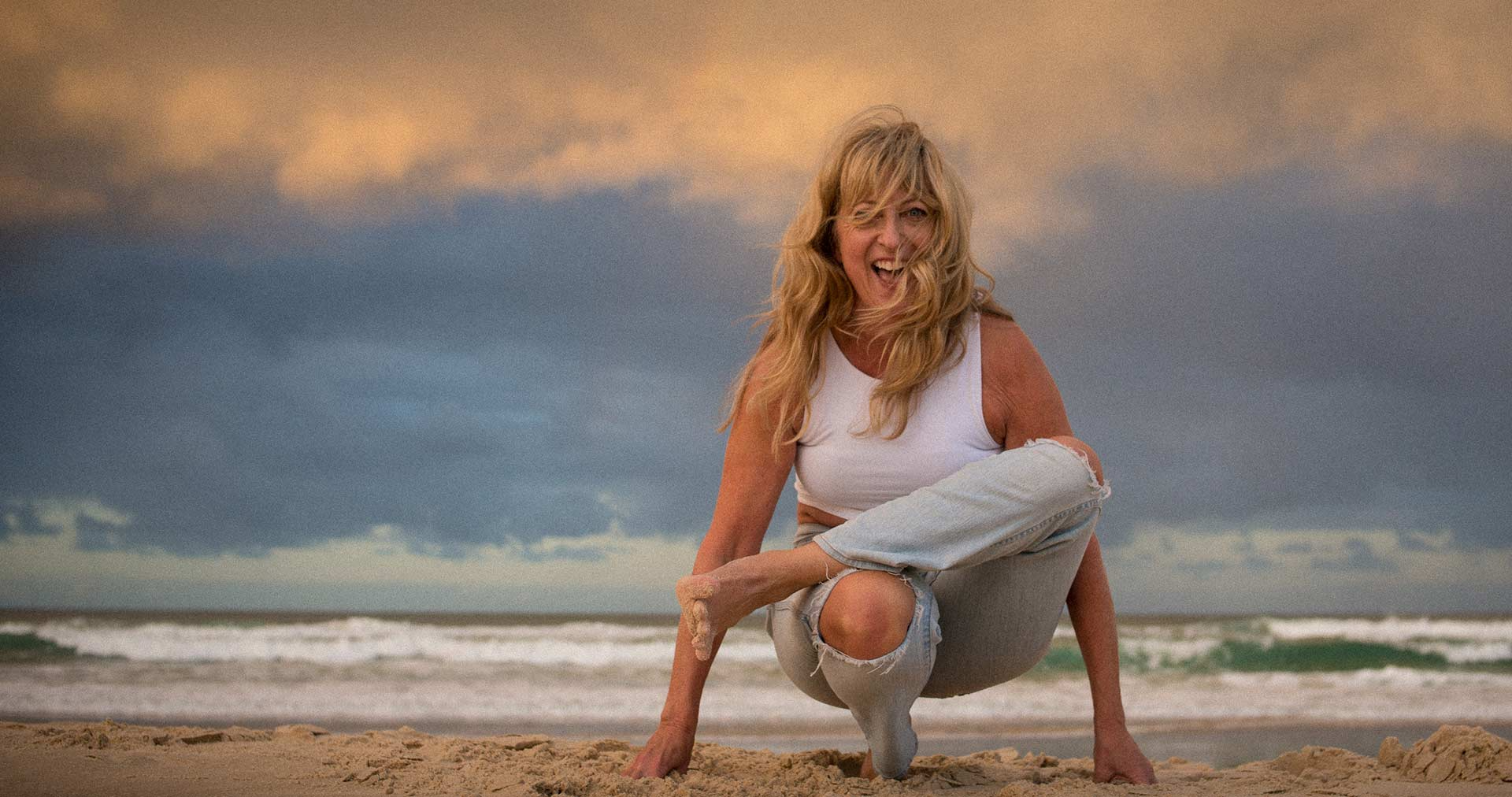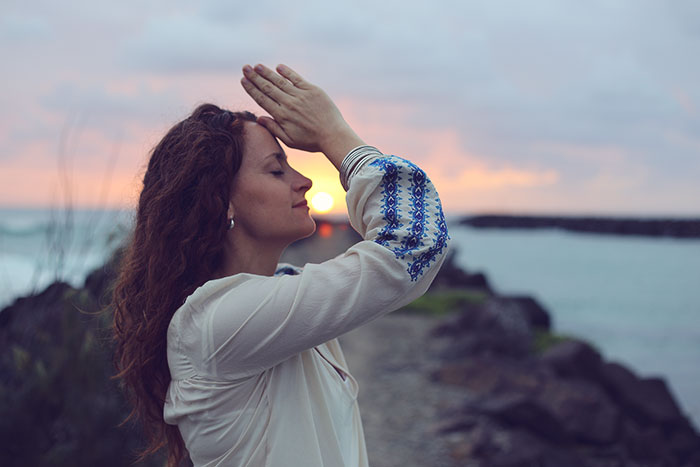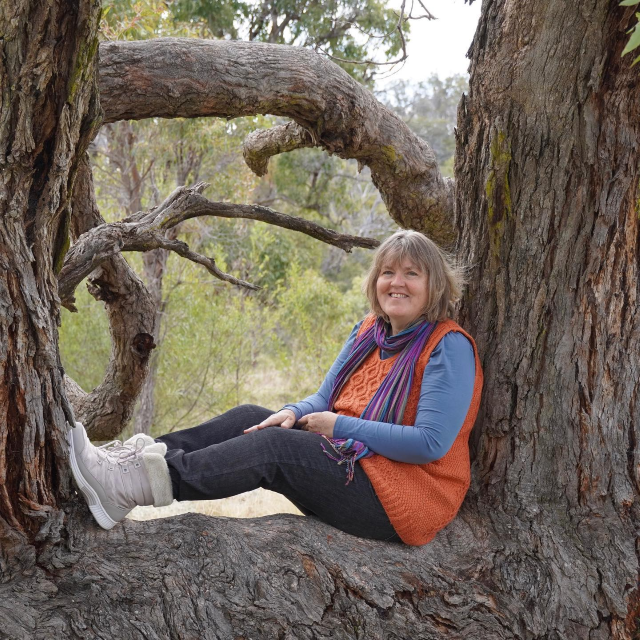3 Ways To Use The Breath As Medicine
Before you read any further do something for me real quick…turn your attention to your breath and then take a couple of deep inhales and exhales.
What happened while you were doing that? Anything…? Well, whatever happened is of course between you and your breath, but hopefully, somewhere in there, some of the craziness of life stopped, and you may have even had a moment of clarity, balance, calm, or connection. That’s because the breath is our secret weapon for creating mental and physical health.
“The breath mirrors the mind and the body, and if you can become conscious of and control the breath, you can transform your experience of the present moment.”
May the Force be with you…
They say that the breath is the doorway to consciousness, and who we are at any given moment is a function of the state of our life force energy or prana. Pranayama brings these two concepts together, giving us the power to increase and enhance consciousness and happiness by directing and balancing our life-giving energy!
An important Ayurvedic tool for healing, pranayama can be used to manage the functional energies of Vata, Pitta, and Kapha and their effects on the body and mind. It’s a way of directing those energies toward their greatest good, resulting in a healthier and more blissful you!
How to open the doorway to health and happiness
First, tune in. Who are YOU at this moment? Who do you need or want to be? Where does your energy need to be directed? Gaining an awareness of your own state of balance is a vital first step. Pranayama is a lot like a car, it can transport you anywhere, but you need to have some idea of the destination. Here are more tips to help you out:
If you’re feeling… Spaced out, fearful, anxious, nervous, restless, or distracted, chances are you’ve got a little more vata energy than you need floating around in your mind and body. Bringing yourself back down to earth is a matter of slowing things down, and smoothing things out. So try the following:
1. Alternate nostril breathing (Nadi Shodhana)
This is a balancing breath. It focuses the breath through the right and left nostrils individually balancing the cooling and heating sides of the mind and body. Here’s a video to give you an idea of the technique:
How To Make It More Effective For Grounding: Ensuring your hands and feet are comfortably warm, sit comfortably on the floor or in a comfortable chair with back support. Soften the muscles of the face and shoulders. Allow the lower body to feel heavy and grounded. Balance the inhales and exhales, ensuring that the length of the breath is the same for both (i.e. a count of four).
Variations: If vishnu mudra is a little uncomfortable (or if your fingers just don’t go that way), rest the tips of the index and middle fingers on your forehead at your third eye…
Advanced practice: Include a short kumbhaka (breath retention) by Inhaling for four counts, closing off both nostrils, holding for four counts, releasing one nostril, and exhaling for four counts. Build up to 10 rounds of this.
If you’re feeling… irritable, critical, angry, or intense, if your body feels overheated or the hot weather is making you especially uncomfortable, it’s a pretty clear sign that your pitta (heat) energy is on the rise. To cool things out, you can do this:
2. Moon Breathing (Chandra Bhedana)
Changra Bhedana is a cooling form or alternate nostril breathing that focuses on inhalation through the left nostril or the cooling side of the body. You can watch how it’s done here:
How to make it more effective for cooling: Practice near a natural water source (i.e. a lake, river, or ocean), in a well-ventilated room, or under the light of a full moon. Make sure you’re comfortable. Relax your body, the muscles of your eyes, and your face. Breathe naturally. Set an intention to release the heat in your mind and body.
Variations & Advanced practice: The same variations and advanced practice that apply to alternate nostril breathing will apply to this breath!
If you’re feeling… Heavy, depressed, sluggish, or lethargic, it’s likely that Kapha is taking hold of your mind and your body. To free yourself and lighten up, you need to stimulate and energize things (Kapha is heavy, slow, and dull), so try this:
3. Ujjayi breathing
A standard amongst practitioners of ashtanga vinyasa yoga, Ujjayi pranayam heats and stimulates the body from the inside out. It’s an exhilarating breath that promotes clarity and focus. Known as “Ocean or Victorious” breath, it’s a simple practice that lifts energy and boosts resilience in the mind and body.
How to do it: The key to Ujjayi breath is the constriction to the back of the throat which creates the signature hissing sound and can take a bit of time to master. The best way to get a sense of what that’s like is to try this:
Inhale deeply through the nose and exhale through an open mouth constricting the throat as if trying to fog up a mirror (you can even try it with a mirror).
After a few breaths, try the same breath only with the mouth closed, exhaling through the nose. Now practice the throat constriction on the inhale.
Ujjaiyi-ing for Kapha: Find a comfortable seat, resting your hands in your lap. Relax the muscles of the face. Start with a simple yogic breath inhaling and exhaling through the nose. Then add the throat constriction. Start with 10 slow breaths evenly inhaling and exhaling and then increase to as many as you feel comfortable with.
How to make it even more effective for stimulating… To up the exhilaration, be sure to make it LOUD. This will mean slightly increasing throat constriction (it might take time to master). To increase the stimulation of this breath, consider practicing it while doing a few Sun Salutations!
Advanced practice: Include both kumbhaka (breath retention on the inhale) and bahya kumbhaka (breath retention on the exhale). To do this, inhale to a count of five, hold your breath in for a count of one, exhale for a count of three, and hold your breath out for a count of one. Start with ten rounds.
The fine print
Although fairly simple, these practices can be powerful. It’s important to be observant of the body’s reaction to these techniques. If you are currently under the care of a doctor, be sure to gain approval before practicing.
No matter how you’re feeling or which one you choose to do, take a few moments in the end to notice the effects of breathing on your mind and body. This is one of the keys to making this practice so powerful and effective. Another is the fact that it’s available to us anytime, anywhere; your breath goes where you go and is ready to serve when you need it.
What’s your favorite pranayama technique? How do YOU use the breath to shape your experience of the present moment? Share in the comments, we want to know!











Round about now, if you’re like anyone (or everyone) you’re thinking about the promises you’ll make to yourself and the many ways you’ll change your habits and behaviours in 2023.